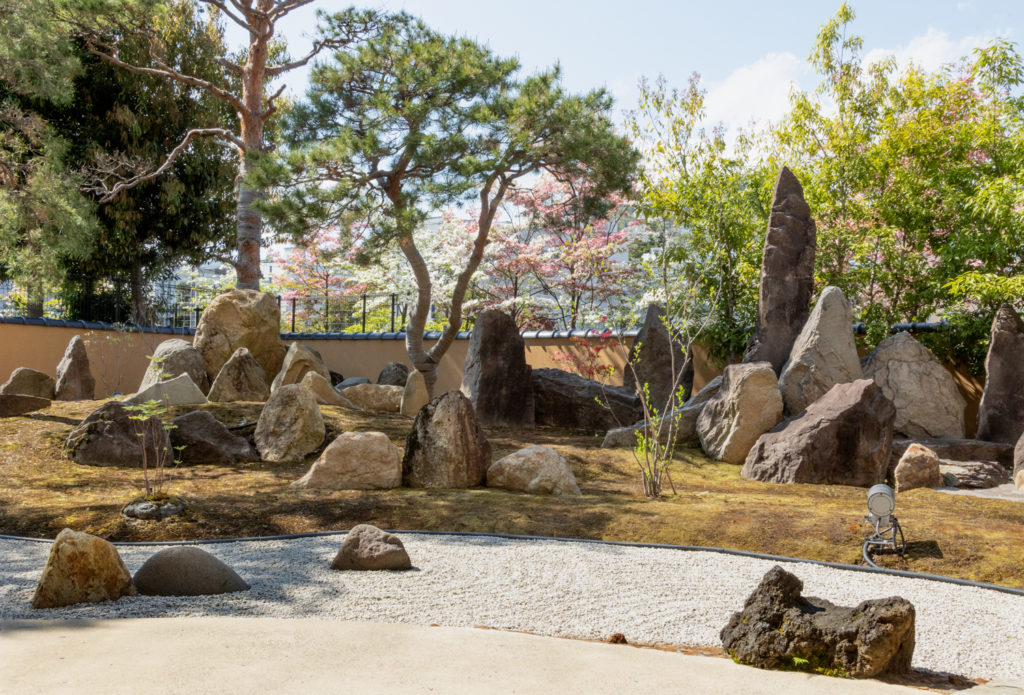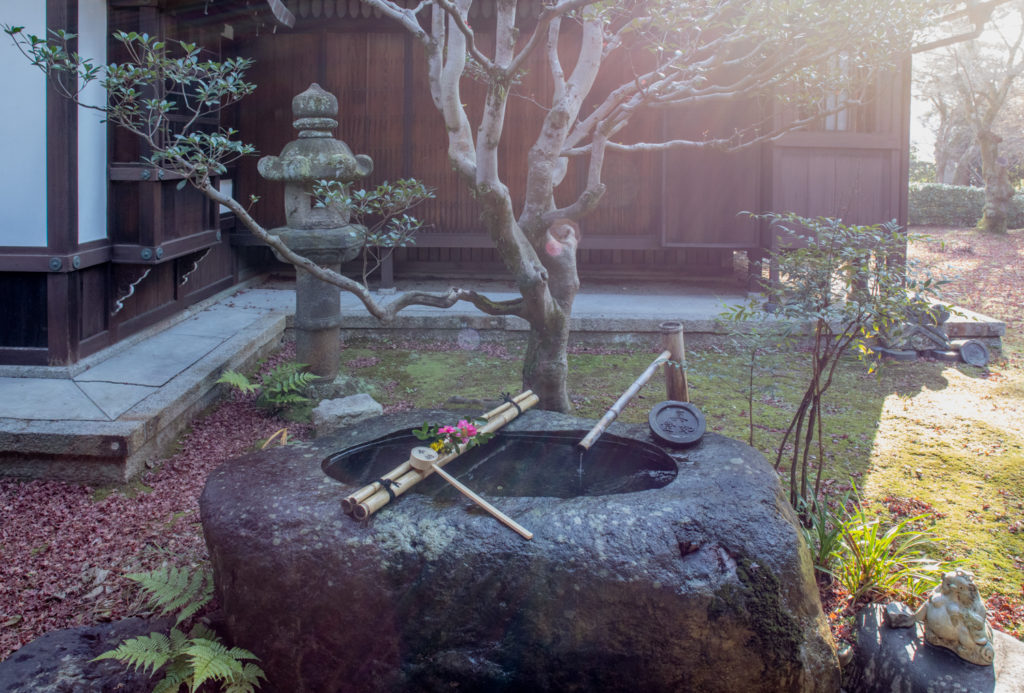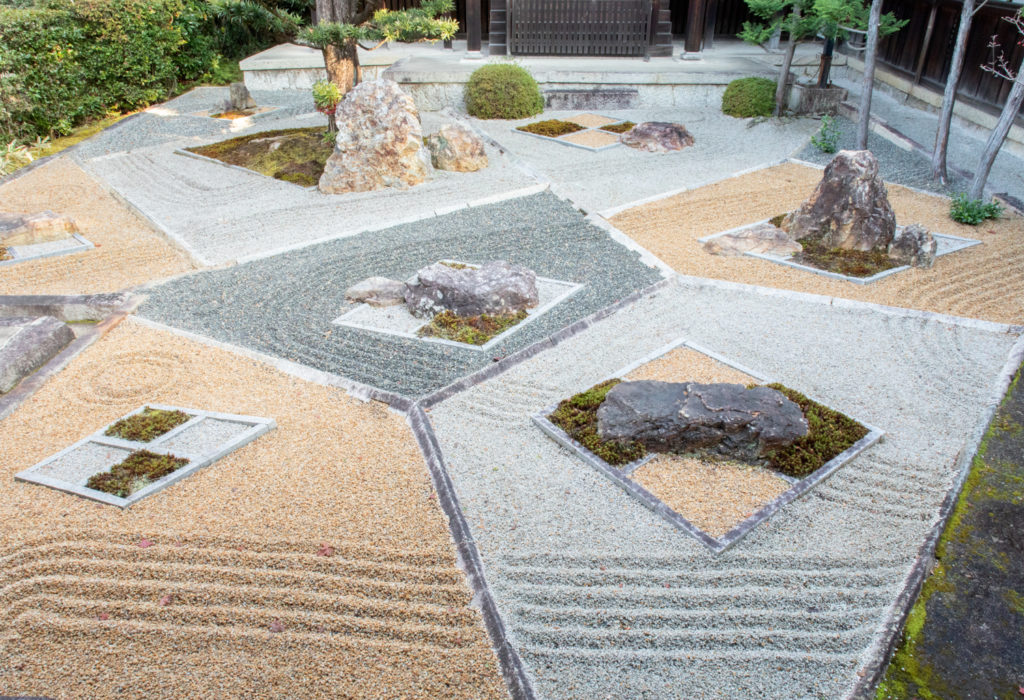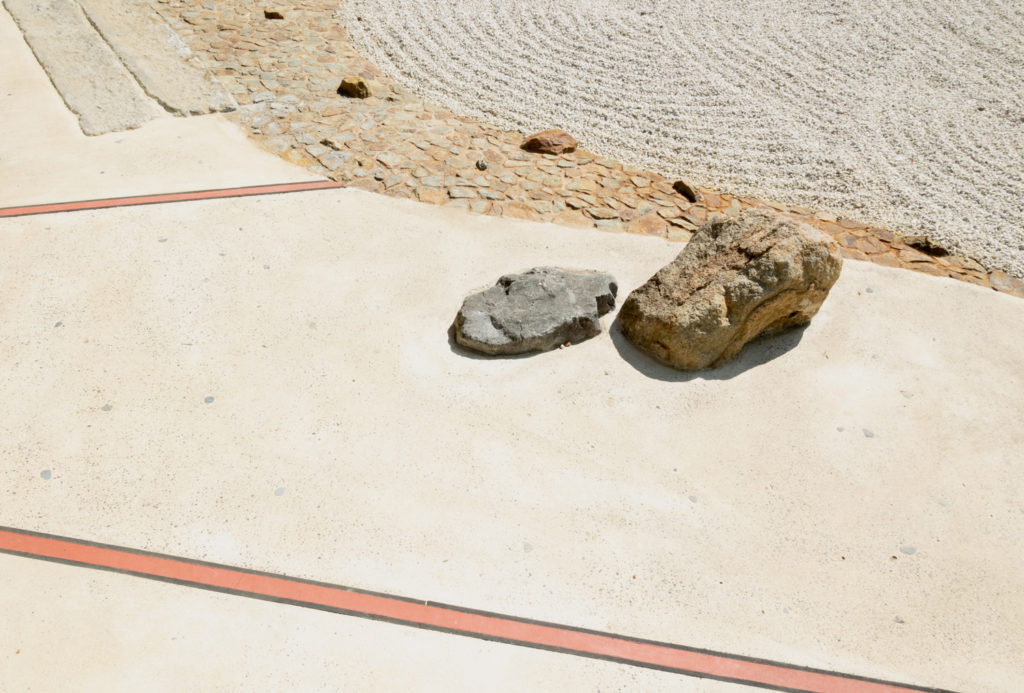“Often, when I am asked to introduce myself, I say that I am the third person and not the 3rd generation to become a garden designer. My grandfather was a garden designer, as was my father, but it is not something you can inherit. My father used to tell me I should pursue garden design only If I was interested in it.”
– Chisao Shigemori

Chisao’s grandfather, Mirei Shigemori was a great 20th century garden designer who brought Japanese garden design back to life after the gardens had stopped evolving and been somewhat abandoned for over 300〜400 years. He was a writer, researcher, poet, calligrapher, designer, architect and practiced Ikebana and the Japanese tea ceremony. But all in all, he was a pioneer who was known for his karesansui works or “zen rock gardens”.
After college, Chisao got by with part time work and had an interest in motorcycles and traveling. Strangely enough when we traveled, he always had a habit of visiting famous Japanese gardens. His interest in motorcycles evolved into circuit racing but he also realized the financial burden of motorcycle maintenance. Little by little, he learned to repair motorcycles himself and at one point seriously considered becoming a racing mechanic. But without a secure, stable job, the racing circuit life came to an end as jobs didn’t come so easily.
At this same time his father asked Chisao to help him survey a Japanese garden. This small experience left a profound impact on Chisao and helped to spark his interests in Japanese gardens. He later realized that what he saw were these great gardens that the average person would not have access to. More and more Chisao found himself getting involved in his father’s garden career and visiting old temples and shrines with his father as well as attending seminars and also helping to edit garden journals. These layered experiences were the impetus for him to get more involved in Japanese garden design.

An offer came for a job to help with trimming trees and garden maintenance in Kawagoe. Work moving my body always seems to suit me and I really enjoyed the work, says Chisao.
“I put 6 years into it and when I was finally ready to study fully under my father, he passed away. I felt like I was thrown out and thought this is the job I am committed to do.
A garden is nature created by humans, but by coexisting with nature created from the earth. It is attractive to transform that into a more expansive space.
A garden never looks the same during any given time, weather, or season, and that fascinates me.
There is nothing more moving than to witness the face of the garden, which can only be seen under these certain conditioned circumstances. You can draw the picture you envisioned three-dimensionally on the ground. I was fascinated by the fact that it changed from moment to moment depending on the weather and time of day.”

“I want to make something that is explosive, a fusion of plans and elevation that is completely absorbed by traditions. With the rise in the armaments around the world these days…it is an anti-protest to an action that these cultural spaces vanish in an instant by the misery of war.”

“There are so many things you can learn from Historical Gardens. You learn through time and tradition how the Japanese gardens evolved. I am engaged in Japanese gardens, and for older gardens I think it is essential to thoroughly understand and feel from being there. My grandfather developed his own interpretations. However, those are Mirei`s ideas and sensibilities and they are different from my father and I. By having knowledge of the basics and then incorporating your own ideas, you can create a new garden.”

“I believe that innovation and tradition can coexist. However, that doesn’t mean you can do whatever you want. I think it’s a big mistake to just think of doing something new. I think you can say the same in the modern art world. By understanding the essence of Japanese Gardens fully then you can thrust, pack and break. Otherwise, it is just destruction. The word innovation can only apply under these conditions. I think this is the most important part.”

“I think to have a traditional job means doing a job that plays a part in Japanese culture. However, if it seems that tradition is simply a straitjacket, then nothing new comes to light. Whether we should create the next new heartbeat from there, looking back on history and being able to speak accurately are two very important pillars. By applying this to myself now and to carry these ideas on into the next generation it’s very important to educate and grow.”
As I finish putting this story together a book pops into my head. A classic book about values and a quality to say the least.
“Zen and the Art of Motorcycle Maintenance”
by Robert M. Prisig.
Chisao Shigemori`s list of garden recommendations to visit:
There are may great gardens in Kyoto but as we know Papersky readers like to read we purposely chose gardens that are located outside of Kyoto.
Some of Chisao’s favorite Gardens:
Moutsuji garden, Iwate Japan
Ritsurin Kouen, Kagawa Japan
Kyu tokushima-jou omotegoten garden Tokushima Japan
Awakokubunji garden Tokushima japan
Yasuyuki Takagi
Yasuyuki Takagi is a photographer / director born in Tokyo, Japan. He studied Media Arts at Pratt Institute in Brooklyn, New York and lives and works in Tokyo, Japan.He has published photo books “小さな深い森 Petite Foret Profonde” and ”植木 UEKI” both from France and his latest project “マロニエ Marronnier” was shortlisted at the 50th ARLES international photography festival. His directing works includes: “How to be like Tom Sachs” “A portrait of a Place: Arakicho” amongst others.











